Fly fishing for Walleye is a popular activity.
But here’s the catch – it can be quite challenging to do. After all, they have unpredictable habits that make it tough for anglers to read.
So, how can you catch a Walleye successfully?
Whether you are a beginner or a pro, these are some tips to help you boost your catch. Check out these insider techniques and elevate your fishing game!

Facts You Should Know about Walleyes
Before we try to catch some Walleyes, let us talk about their features.
It makes sense to get to know this fish more. This way, you can determine the right approach to catch them.
First of all, Walleyes are nomadic creatures. They hardly stay in one place.
These fish species are not your usual ones that are predictable. In fact, they are harder to read than a Trout or other similar fish.
However, it helps to understand their lifecycle to gain some knowledge on how to catch them. For instance, you might want to know about the best time to fish for Walleyes.
Ideally, fly fishing for Walleye begins once the ice melts. They usually head out to shallower bays right after the ice-out season.
Then, they transition to moving towards the deeper waters. This occurs as the weather gets a little bit warmer.
It is also worth noting that Walleyes are your Spring spawner fish. They prefer to spawn once the water temperature reaches 47 degrees Fahrenheit. As for their preferred area to spawn, it is usually on a rocky shoreline. For instance, it could be in fist-sized smaller rocks.
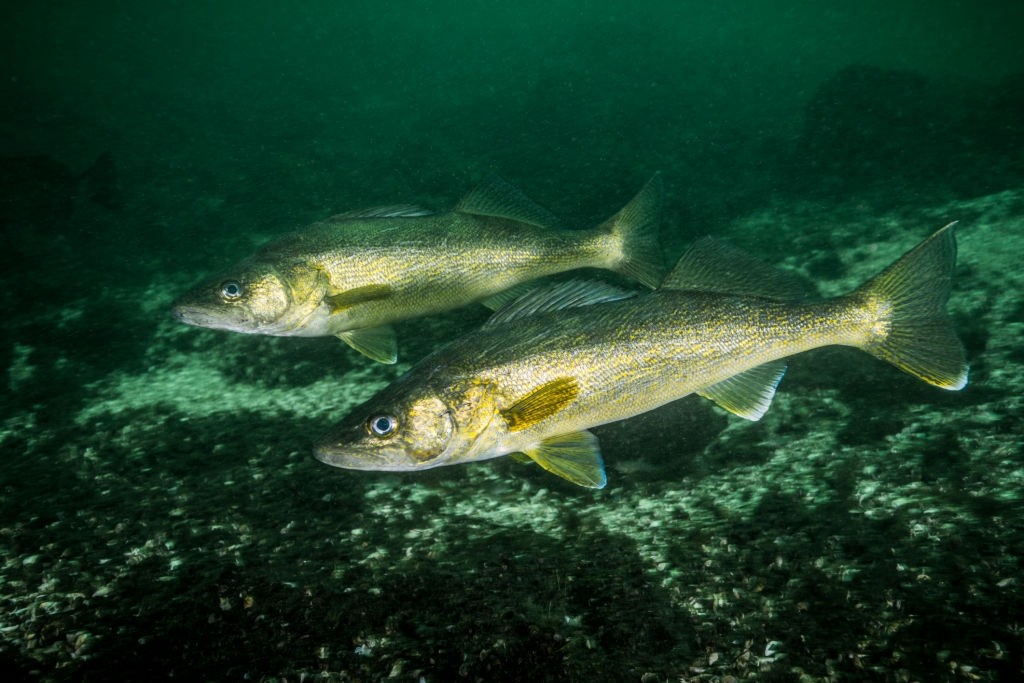
If you are hoping to catch a Walleye, we recommend that you use a fish finder to locate them. You would need to follow the bottom of the lake. Then, check out the rocky bottom, specifically that portion that intersects with a sandy or muddy bottom.
At this point, they are in their transition zone. They are basically waiting until the time is right to spawn.
Spawning Walleyes – What to Expect
As spawning season draws clear, this is the time when smaller Walleye males become more aggressive. Moreover, they go to shallower areas.
Female Walleyes, on the other hand, begin to follow soon after. This signals the start of the spawning season. Thus, many anglers choose to fish for a Walleye as this is the time these species are easier to locate.
The most preferable time to catch one is right before it gets dark. But the most active time of the night is from twilight and up to about midnight. Walleyes are usually feeding at this time. Others tend to just hang around and become more territorial.
If you can go out to fish during cloudy weather, this is even better. However, if they are in an aggressive mood, then you may want to time your fishing when it is bright and sunny outside.
Generally, Spring is the most desirable time to go fly fishing for Walleye.
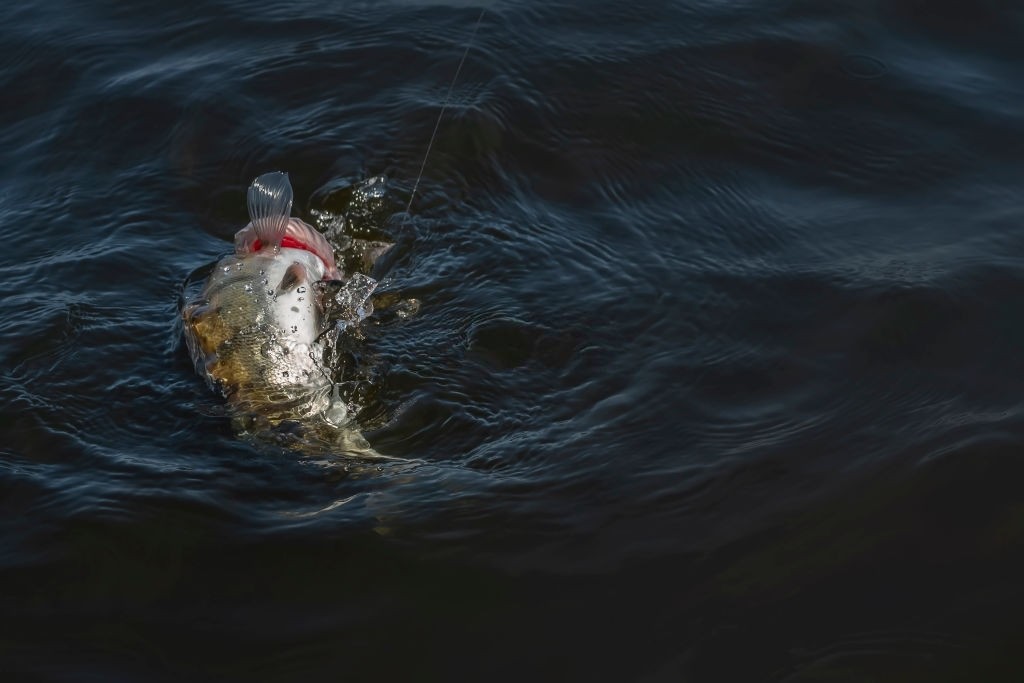
We recommend that you go to rocky areas, specifically those with shallow water. You need to be consistent with the place and time you go. Keep in mind that Walleyes are creatures of habit – they prefer to go to the same location every spawning season.
However, there is one important thing to note – be sure to release fish found in spawning areas.
Release them to be able to reproduce. While there may be no specific laws in other areas regarding this one, it would be best to be mindful of your actions. It would be good to catch the smaller Walleye males but let go of the egg-laden fish.
When is the Best Time to Go Fly Fishing For Walleye
There is no better time to fly fish for Walleyes than before or even during the spawning season.
However, if you are looking to catch a bigger Walleye, the perfect time is after spawning.
Why?
Because it is during this time that Walleyes go on a feeding frenzy. This is why you should be able to find them easily from shallow spots to even deeper ones. The most important thing is that you go to the right location during the spawning season.
Another tip we can give for you is that you should consider fly fishing from your kickboat. It offers a productive experience for you, as long as you go before late June. By this time to about the early days of July, catching Walleyes this way can be tougher.
It is important to note that once the water temperature gets warmer, the fish goes deeper into the water to keep themselves cool. Thus, they are better caught using your conventional rigs that are bottom-bouncing. Flies will give you a much tougher experience.
So, if you want to guarantee a great catch, you should make it a point to go during the late summer months. This is the perfect time to go fly fishing for a Walleye.
What about the other seasons of the year?
For the most part, Fall causes Walleyes to go back to shallow waters once more. However, do take note of the fact that they only do this for a shorter period.
The only difference between Spring and Fall fly fishing is that Walleyes are tougher to find. They spread out more, which makes it a little bit tricky to catch them. But some anglers do find success in catching Walleyes in the Fall but not as easily as in Spring.
As for Winter, this gets even more difficult to catch this fish.
For instance, you need to dig a hole in the ice to make it happen. Thus, you will need complex tools to successfully get yourself a Walleye at this time of the year.
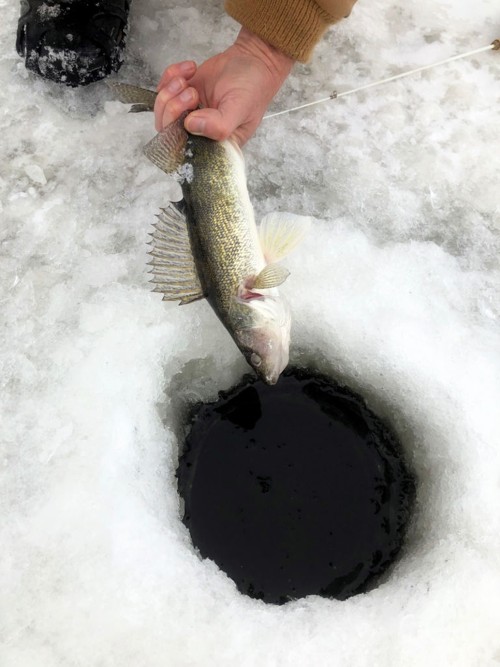
Additional Tips You Should Know on Fly Fishing for Walleye
Do you prefer to catch a Walleye in the river?
If so, then this could also bring promising results to you.
A river Walleye generally has the same habits as those found in other water bodies. They tend to go to shallow waters with plenty of rocks. This is their preferred spot during Spring and they go deeper in the water as it gets hotter.
But one thing to note is that spawning time for Walleyes in rivers tends to have certain regulations. These regulations are in place to protect Walleyes that are spawning. So, if this is the route you are planning to take, you should be aware of these rules.
You may need to fish outside the closures while keeping yourself up-to-date with regulations. It may also be possible to find Walleye below dams while others are in similar barriers. And of course, there is so much action happening during spawning.
Fly Techniques to Catch a Walleye
If you are thinking about fly fishing for these fish species, you need to pay attention to technique.
The primary thing to consider is the fly lines sink rate. When you are in shallow water, an intermediate or floating fly line is your best bet. This is particularly great because of the slow retrieves. As a result, the weighted fly does not leave the bottom too easily.
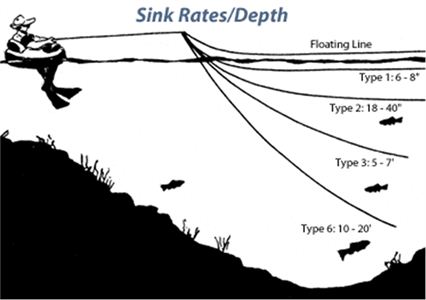
However, when it comes to fly fishing in not so deep waters, you may use either a type 1 or a type 2 density compensated fishing line.
It is best to steer clear from fast sinking fly lines or the sink-tip ones. As the name implies, they sink much too quickly. They also make it difficult to let you know if there is a bite.
But if you are heading in the canyon lakes, then you can put this line to good use. In fact, they are highly recommended by professional anglers who are going to these spots.
Now, we also have the types 3, 4, and 5 sinking lines. They also have a time and place for good use. However, if you are going in deeper water, these fly outfits may make things tougher for you.
Generally, flies work more efficiently up to 15 feet. But once you go beyond that, you will need your traditional tackle to catch a Walleye.
When it comes to retrieves, expect them to be deep and slow. You want to alternate between a long and steady, yet slow retrieves. Also, you should go for a short pulsing type of strips. Never pull the rod off the water.
The goal is to point it close at your fly. This allows you to easily detect any light strikes. And most of all, you will be able to keep the line tightly in your grip.
Do not make this common mistake made by many fly anglers in lakes. They end up maintaining their rod tip at a much higher height. As a result, there is less strike detection. The hits do not feel very evident, and so they end up missing their catch.
Additionally, you need to be well-equipped with special tools when it comes to catching Walleye.
If you are going in the early months of Spring, expect the water to be still quite cold.
This is why we recommend that you wear your layer insulation and waders to keep you warm. These are highly necessary during the early months.
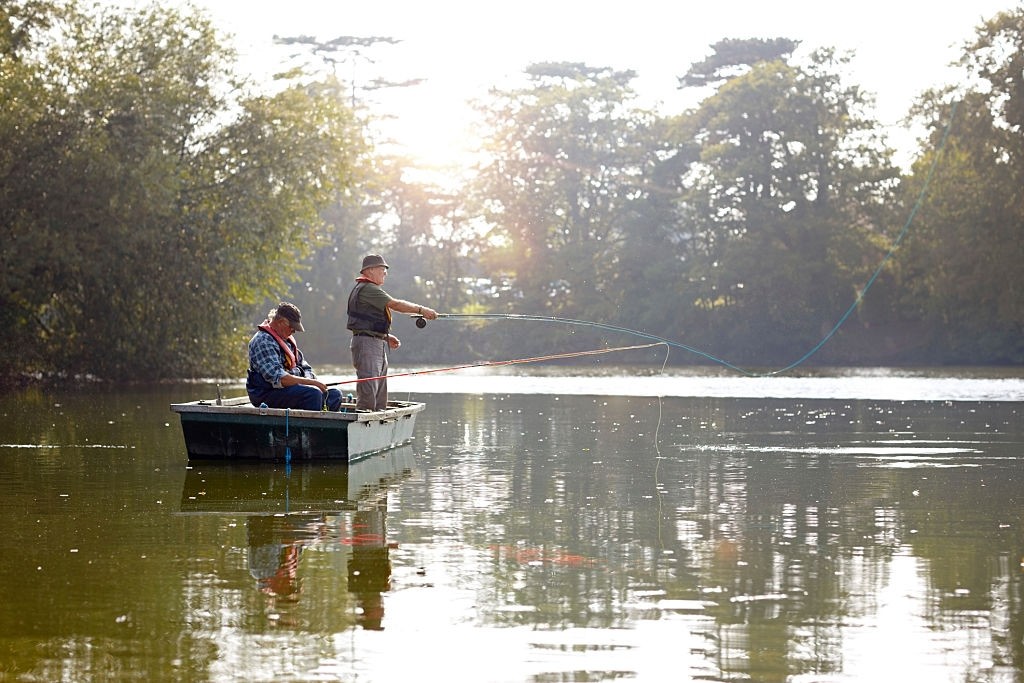
Kickboats should be great for many river and lake fishing adventures. They make things easier since you can use your fins for maneuvering and shifting to various directions. Then, you rely on your hands to catch the fish.
But never leave home without your protective devices. These include an inflatable vest or life jacket, as well as an extra fin. It also won’t hurt to have another pair of oars. After all, you never know when accidents arise.
When fly fishing in lakes, you can use your small boat without any hassle. This is because the narrow spot allows for ease of navigation with a smaller and lighter boat.
But you need to be more prepared once the windy days come. You have to bring anchors to keep your boat steady. Otherwise, it will be a very tough ordeal without these things to help you in a challenging weather.
Best Flies to Use for Catching Walleyes
For the most part, Walleye feed on crayfish, leach eaters, and real minnow. This is why anglers recommend that you use bigger flies.
One thing you can try is the size 4 inverted Zonker. Pros love to use this fly because of the weighted belly that makes it difficult to get caught on debris. As for the color, you should stick to white or yellow when fly fishing at day. But come night time, you should opt for purple or black ones. These are very effective and reliable to use during dim-light conditions.

Now, if you are fishing in deeper water, you should consider the Clouser Minnows. We highly recommend these flies as they are fast-sinking and perfect for the depths of the water. You should stick to darker colors or even the natural or white ones.

If you want to try a different fly, you can also go for the Wooly Buggers. Choose a color as mentioned above, which will be completely irresistible for a Walleye. Wiggle Bugs are also great, and we love the fact that they are resistant to snagging. You can rely on these for deep water fishing or when there is plenty of debris in the water.
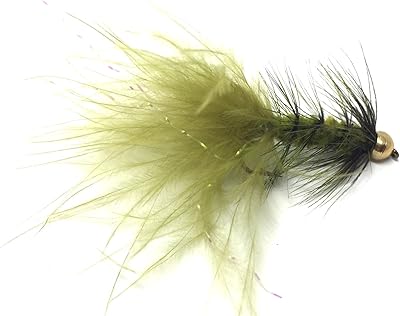
Overall, fly fishing for Walleye can be an enjoyable experience. Just be sure to have all the right tools you need, so you can get maximum results. Go at the right time, be at the perfect spot, and you can elevate your fishing game without a doubt!
For more tips, check out this video that will give you more insights on how to catch yourself a Walleye.